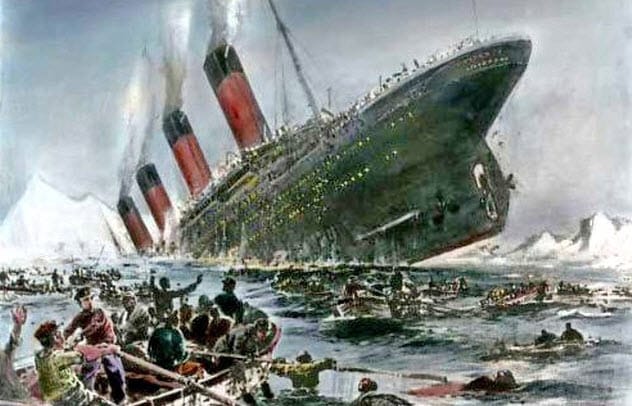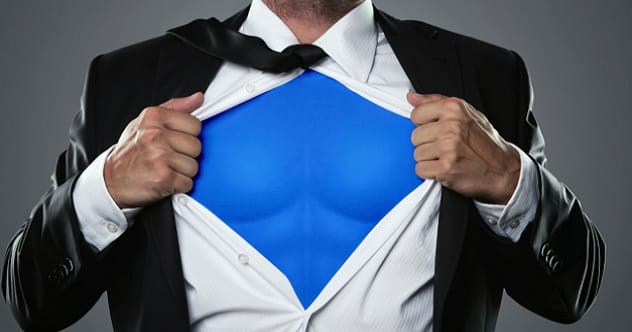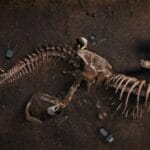We all hope we’d be the ones to help others during a disaster, the hero, not the one who runs. But you never really know how you’ll react until you’re staring a life-or-death situation in the face.
The heroes in these stories faced devastation and death head-on and chose to stay and help. Get ready to be inspired!
Women and Children First

As the RMS Titanic sank into the icy Atlantic on April 15, 1912, chief baker Charles Joughin knew his chances weren’t good. Instead of panicking, he got his fellow chefs to load food and supplies into the lifeboats. He then helped women and children into the boats, even “throwing” reluctant passengers in to save them. He also tossed deck chairs overboard for those who couldn’t get on a lifeboat.
Joughin is thought to be the last person to leave the Titanic, holding onto the railing as it sank. He spent almost three hours in the -2°C (28°F) water before being rescued, suffering only swollen feet. It’s believed that the copious amount of whisky he drank helped keep him warm enough to survive. [1]
When Disaster Strikes
On June 24, 2021, Miami’s beach paradise became a scene of horror when the Champlain Towers South condominium collapsed, killing 98 people. Four people were pulled from the rubble, but one later died in the hospital. Thirty-five people were rescued from the standing part of the building, and 11 were injured.
Nicholas Balboa was walking his dog when he felt what seemed like an earthquake. Realizing the nearby building was collapsing, he ran towards it when he heard a boy crying for help. He found a hand sticking out of the debris and, with the help of another person and emergency crews, pulled fifteen-year-old Jonah Handler to safety. Sadly, Jonah lost his mother in the tragedy. [2]
A Day of Terror
Many acted heroically after the Indian Ocean earthquake on December 26, 2004, which triggered a massive tsunami that devastated coastlines and killed almost 230,000 people. Ten-year-old Tilly Smith, vacationing in Phuket, remembered a video of a 1946 Hawaii tsunami she’d seen in geography class. Seeing the sea frothing and receding, she recognized the signs and pleaded with her family to warn others. Her father alerted the resort staff, who cleared the beach, saving around 100 lives.
Peter Davison, a paramedic from Hobart, heard about the tsunami and rushed to Phuket International Hospital, where he activated their disaster plan. He worked 16-hour shifts for five days treating the injured and keeping calm amid the chaos. [3]
The Tragedy That Changed America Forever
Amid the smoke rising from the World Trade Center, many people acted with incredible bravery. Some were trapped, elevators were failing, and some jumped from the windows. Here are a few of the heroes from that day:
Benjamin Clark, a 39-year-old former Marine and chef, helped everyone on the 96th floor of the South Tower escape. He even assisted a woman in a wheelchair. Tragically, Clark died when the South Tower collapsed.
Thomas Burnett, a passenger on the hijacked United Airlines Flight 93, helped organize an effort to regain control of the plane. Although the plane crashed in Pennsylvania, Burnett and the other passengers were credited with preventing the hijackers from reaching their intended target, likely the White House or Capitol building.
WTC maintenance worker William Rodriguez was in the basement of the North Tower when the attack occurred. He climbed the stairs with firefighters, unlocking doors and helping to save hundreds of lives. [4]
“Come, I’m here!”
On March 15, 2019, Brenton Harrison Tarrant opened fire at the Al Noor Mosque and the Linwood Islamic Center in Riccarton, New Zealand, killing 51 and injuring 40.
Abdul Aziz, 48, didn’t hide. Knowing his four sons and others were inside the Linwood Mosque, he grabbed a credit card machine and ran outside, yelling, “Come, I’m here!” He threw the machine at the gunman.
Aziz then grabbed a discarded gun and threw it at the gunman’s car. Tarrant fired at him as Aziz zig-zagged between cars, keeping the shooter in sight. Tarrant eventually fled in his car, with Aziz in pursuit. Police soon forced the car off the road and arrested Tarrant.
Abdul Aziz is credited with stopping the terrorist from killing more people and helping to get him arrested. [5]
“It wasn’t hard.”
The attack on Pearl Harbor, which drew America into World War II, also saw acts of heroism. Almost 20 naval ships and 200 aircraft were destroyed in the surprise attack. More than 2,400 US soldiers died, and 1,000 were wounded.
Third Class cook Doris Miller was collecting laundry when the attack began on December 7, 1941. He rushed to his battle station, found it destroyed, and then ran to the deck to carry wounded soldiers. Miller also delivered ammunition to machine gun crews, then manned a gun himself and fired for fifteen minutes, even though he had no training. The 22-year-old became the first African American to receive the Navy Cross for his bravery, later saying, “It wasn’t hard. I just pulled the trigger and she worked fine.” [6]
“I was just doing what I was taught to do.”
The sinking of the Lusitania by a German torpedo on May 7, 1915, was a horrific event of WWI. Nearly 1,200 people died when the ship split in two and sank within 18 minutes, leaving passengers struggling in the freezing ocean.
Able Seamen Joseph Parry and Leslie Morton hauled 100 people from the water, aided by Irish fishermen. Parry pulled a young mother clutching her screaming baby to safety. The woman gave him one of her baby’s booties, which he treasured, writing “Lest We Forget Lusitania May 7, 1915” on the sole. Sadly, the woman and baby died soon after.
Another survivor saw Parry braiding a young woman’s hair to calm her. Parry received a Silver Board of Trade Medal for Gallantry, saying, “I was just doing what I was taught to do.” [7]
Young Heroes
On March 27, 1985, Willem Horne lost control of the school bus he was driving, crashing into the Westdene dam in Johannesburg, South Africa, with 72 students on board.
Seventeen-year-old Pieter Koen climbed out of a window and onto the roof of the half-submerged bus. He dove into the water and rescued a student, repeating this four more times. On his sixth dive, Koen didn’t resurface.
Theo de Koker and Matthys Wehmeyer, on another bus, saw the crash and ran to help. They dove into the water and rescued their friend, Deon Beukes, and then continued to rescue other students, including de Koker’s sister. Danie Theron also saved three classmates.
Almost 3,000 people gathered, including parents of the students. Medical personnel worked to save those pulled from the water. By day’s end, 42 had died, and 30 were saved. The bus driver survived.
Pieter Koen and Danie Theron received bravery awards, Koen posthumously. Four years later, Theron took his own life. [8]
Unexpected Disaster
When the White Island volcano in New Zealand erupted on December 9, 2019, 47 people were on the island. Twenty-two died, and 25 were injured, suffering severe burns.
White Island Tours manager Paul Kingi had just left the island with his tour group when the eruption occurred. He returned in an inflatable dinghy and rescued 20 people.
Helicopter pilot Tom Storey and two colleagues rescued 12 people, despite the dangerous conditions. Because conditions were too unsafe for other emergency helicopters, Storey, Mark Law, and Jason Hill transported the survivors to the nearest hospital. [9]
For the Sake of Saving Hundreds of Thousands of Lives
In the aftermath of the Chernobyl disaster, a new threat emerged: nuclear steam explosions, potentially reaching as far as Minsk, 320 kilometers away.
To prevent this, a pressure valve had to be released. Alexei Ananenko, Valeri Bezpalov, and Boris Baranov volunteered. Ananenko knew the valve’s location. The three men dove under the reactor and released the valve, saving the area from a greater disaster. They all suffered severe radiation poisoning and died within weeks, knowing they were sacrificing their lives to save others. [10]
These stories remind us that heroism can be found in the most unexpected places. It’s a testament to the human spirit’s ability to rise above tragedy and make a difference.
What did you think about these stories? Share your thoughts below!










